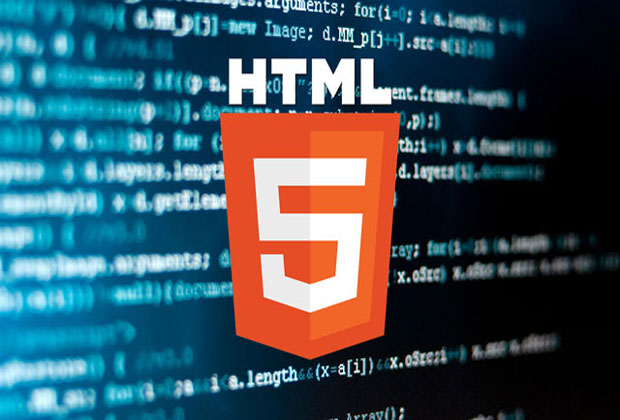According to the present-day usage information posted on W3Techs, greater than 54% of all websites presently use HTML5 as a markup language. The effectiveness of HTML5 can also be determined from the fact that YouTube is currently utilizing its miles as its default video player. Likewise, Facebook has also switched from Flash to HTML5 for all its movies. A range of surveys has highlighted that a large percentage of developers nowadays pick HTML5 cell packages to be native and hybrid mobile packages.
HTML5, along with CSS3 and JavaScript, facilitates builders to construct responsive websites that look properly on every tool. Also, the HTML5 packages deliver an optimized viewing experience on computer systems, laptops, smartphones, tablets, and phablets. Unlike native and hybrid cellular apps, the HTML5 cellular apps run on web browsers.
Major operating structures and internet browsers currently aid the 5th model of HTML. Hence, it turns less complicated for builders to manage, replace and distribute the cell programs without any trouble. There are also many motives why many analysts trust that HTML5 is changing the mobile app development panorama consistently.
READ MORE :
- Should You Add a Mobile Theme to Your WordPress Blog Or Website?
- Mobile Media Mania – How YOU Can CA$H In
- What Are the Tips for Investing in The App Market?
- Common Mistakes Bloggers Make and How to Avoid Them
- Elements of a Strong Corporate Travel Program
Why is HTML5 Transforming the Mobile App Development Landscape?
Simplifies Cross-Platform Mobile App Development
To generate more sales, builders nowadays construct cellular apps concentrated on multiple mobile structures. The features and local programming language of man or woman cellular structures vary. So, developers must place greater time and effort into building native apps for each focused mobile OS. But HTML5 makes it simpler for builders to create pass-platform mobile apps using usually used internet technology. The programmers can similarly write a single codebase and reuse the same code base across unique cellular structures.
Overcome Mobile Device and OS Fragmentation
While developing cell apps, developers find it formidable to cope with key demanding situations like cellular tools and OS fragmentation. For example, they have to construct apps to concentrate on a spread of devices powered using the trendy iOS or Windows Phone versions. Similarly, they must ensure that the app runs perfectly on a wide form of gadgets powered using special models of Android.
HTML5 allows builders to build apps that run seamlessly on each cellular tool, platform, and network. Hence, it becomes less complicated for HTML5 builders to the consciousness of the app’s capabilities and functionality instead of disturbing about tool and working system fragmentation.
No Need to Learn Native Language of Each Platform
While developing native apps, developers ought to use the native programming language of each targeted mobile platform. For instance, they ought to write Android apps in Java and iOS apps in Objective-C or Swift. But HTML5 enables developers to make the internet software on many cell structures without the use of multiple programming languages. They can definitely use net technology like HTML5, CSS3, and JavaScript to build a ramification of go-platform mobile apps and responsive websites.
Easy to Maintain and Update Apps
As noted earlier, HTML5 enables programmers to write down the cell utility once and install it across multiple cell platforms. Hence, the builders are required to keep a single code base. They can, without problems, make modifications to the code to make the app trojan horse-free and perfect throughout many platforms. Similarly, the unmarried code base makes it less difficult for programmers to add new features and functionalities to the utility without pushing users to update their apps. They may even exchange the content material of the applications easily to preserve the users involved and engaged.
Improve Visibility of Apps
At present, users choose to pick from millions of cell apps available in the App Store, Google Play, and Windows Store. Hence, the corporations should force a strong advertising approach to improve the visibility and discoverability of their apps. Likewise, they need to promote the paid apps correctly to persuade customers to select them over similar free apps.
But organizations often locate it less difficult to distribute and market HTML5 packages. Unlike native apps, HTML5 packages do not want to be submitted to numerous app stores. The open distribution mode further facilitates corporations to improve their applications’ visibility and discoverability while lowering competition.

Option to Use Many Robust HTML5 Frameworks
The developers also choose to reduce the cell app development time appreciably via strong HTML5 frameworks. Based on the venture’s character and requirements, they have the option to choose from numerous HTML5 frameworks such as Kendo UI, Ionic, Intel XDK, Sencha Touch, and Framework 7. The builders can also use PhoneGap to bundle the HTML5 applications natively and distribute them thru app stores.
Curtail Development Cost
HTML5, CSS3 and JavaScript are open supply web technologies. So these technology help organizations to lessen cross-platform mobile app development value drastically. A business enterprise also has a choice to construct hybrid cell apps by leveraging its existing net builders’ ability.
Any developer acquainted with those generally used web technology can easily construct an expansion of mobile programs. Also, HTML5 frameworks allow builders to build strong packages without placing greater effort and time. The decreased development time and simple distribution model further assist companies in reducing time to market appreciably.
However, the developers nevertheless need to deal with some of the challenges, even developing HTML5 packages. For example, the gradual execution velocity of HTML5 impacts mobile apps’ overall performance as most mobile devices has limited processing power. Likewise, HTML5 mobile apps can’t take advantage of features precise to devices and running systems.
Also, those applications lack monetization and advertising options as there’s no centralized save for those cell apps. Many builders still pick developing HTML5 mobile programs to make new packages available on a couple of platforms in a shorter quantity of time.

